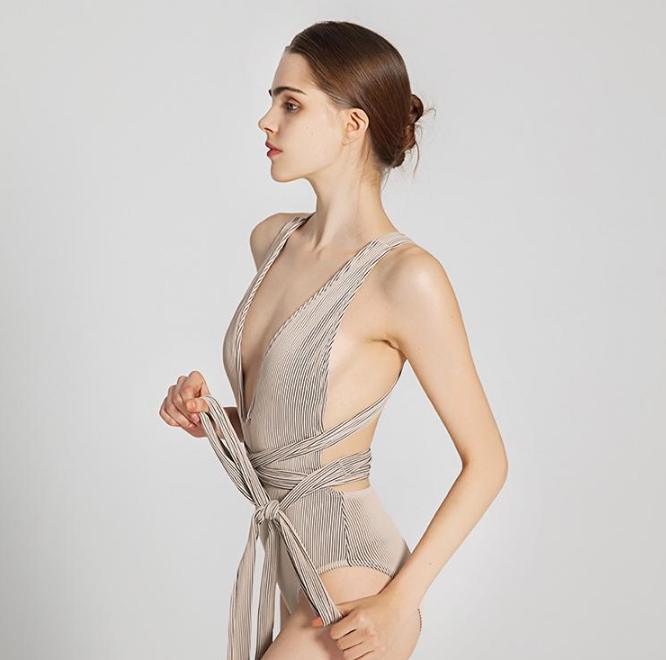In the vast ocean of fashion, the women’s swimwear market makes a significant splash, with its unique blend of functionality and style. Designers and retailers alike must navigate the currents of consumer preferences, fashion trends, and ethical considerations to stay afloat in this dynamic industry.
Market Status Analysis
1.1 Current Trends and Growth
The women’s swimwear market is riding the wave of growth, propelled by factors such as increasing disposable income, rising interest in leisure activities, and the growing influence of social media. According to recent reports, the market is expected to continue its upward trajectory, driven by innovations in design, fabric technology, and marketing strategies.
1.2 Key Players
Among the key players dominating the market, JSPEED stands out as a notable manufacturer renowned for its commitment to quality, style, and innovation. With a diverse range of offerings catering to various tastes and preferences, JSPEED has cemented its position as a leader in the industry.
1.3 Regional Variations
Regional variations in demand and preferences add depth to the women’s swimwear market. While vibrant colors and bold patterns may reign supreme in tropical destinations, more subdued tones and classic silhouettes may find favor in colder climates. Understanding these nuances is crucial for designers and retailers seeking to tailor their offerings to different markets effectively.
1.4 Impact of Recent Events
Recent events and trends, such as the rise of sustainable fashion and the shift towards body positivity, have left a lasting imprint on the swimwear market. Consumers are increasingly seeking eco-friendly options and inclusive sizing, prompting industry players to rethink their approaches and embrace more ethical and inclusive practices.
Consumer Needs and Preferences
2.1 Comfort, Style, and Durability
When it comes to swimwear, consumers prioritize comfort, style, and durability. From supportive cuts and breathable fabrics to flattering designs and long-lasting construction, women seek swimwear that not only looks good but also feels great and stands the test of time.
2.2 Designs, Colors, and Patterns
Preferences in terms of designs, colors, and patterns vary widely among consumers. While some gravitate towards timeless classics like black and navy, others embrace bold prints and vibrant hues. From sleek one-pieces to playful bikinis, the options are as diverse as the individuals who wear them.
2.3 Influence of Body Positivity Movements
The body positivity movement has had a profound impact on swimwear preferences, fostering a culture of self-acceptance and empowerment. As a result, there has been a growing demand for inclusive sizing, diverse representation in marketing campaigns, and designs that celebrate all body types.
2.4 Importance of Sustainability and Ethics
In an era of heightened environmental consciousness, sustainability and ethics play an increasingly important role in consumer decision-making. From eco-friendly fabrics and ethical manufacturing practices to transparent supply chains, modern consumers are prioritizing brands that align with their values.

Challenges Faced by the Industry
3.1 Supply Chain Challenges
One of the primary challenges facing the swimwear industry is sourcing sustainable materials. While there is a growing demand for eco-friendly options, finding suppliers that meet stringent environmental and ethical standards can be a daunting task.
3.2 Balancing Fashion Trends and Practicality
Balancing fashion trends with practicality poses another challenge for designers and retailers. While consumers may be drawn to the latest styles and silhouettes, they also expect swimwear to offer functionality and comfort, especially for active pursuits like swimming and surfing.
3.3 Addressing Inclusivity
Addressing inclusivity in sizing and design remains a pressing issue for the industry. While strides have been made towards offering a wider range of sizes, there is still work to be done to ensure that all women feel represented and catered to in the swimwear market.
3.4 Competition from Fast Fashion
Competition from fast fashion and online retailers adds another layer of complexity to the swimwear industry. With their ability to quickly churn out trendy designs at competitive prices, these competitors pose a significant threat to traditional brick-and-mortar stores and established brands.
Innovative Solutions in Women’s Swimwear
4.1 Introduction to Sustainable Materials and Customization
In recent years, the women’s swimwear industry has witnessed a wave of innovation, driven by a growing emphasis on sustainability and consumer customization. Brands like JSPEED have introduced sustainable materials like recycled nylon and eco-friendly dyes, reducing their environmental footprint while offering stylish and eco-conscious swimwear options. Additionally, customization options allow consumers to create their swimwear, selecting their preferred style, colors, and patterns for a truly personalized beach look.
4.2 Inclusive Sizing and Integration of Technology
JSPEED and other forward-thinking brands have also prioritized inclusive sizing and fit solutions, recognizing the diverse range of body types among women. By offering a wide range of sizes and incorporating adjustable straps, stretch fabrics, and flattering cuts, these brands ensure that every woman can find swimwear that fits and flatters her unique shape. Moreover, the integration of technology has led to the development of performance-enhancing features such as UV protection, quick-dry fabrics, and chlorine resistance, catering to the needs of active beachgoers.
Emerging Trends in Women’s Swimwear
5.1 Rise of Sustainable Swimwear Brands
As environmental consciousness continues to grow, sustainable swimwear brands have emerged as a prominent trend in the industry. These brands prioritize ethical sourcing, transparent manufacturing practices, and eco-friendly materials, appealing to environmentally-conscious consumers seeking stylish and sustainable swimwear options. With their commitment to sustainability, brands like JSPEED are leading the charge towards a greener and more ethical future for the swimwear industry.
5.2 Influence of Retro Styles and Experimental Cuts
Retro styles and vintage designs are making a splash in the world of women’s swimwear, with high-waisted bottoms, retro prints, and classic silhouettes experiencing a resurgence in popularity. Alongside retro influences, designers are also exploring experimental cuts and silhouettes, pushing the boundaries of traditional swimwear design. From asymmetric necklines to cut-out details, these bold and innovative styles add a modern twist to classic swimwear staples.
5.3 Bold Colors and Cultural Motifs
Bold colors and patterns inspired by nature or cultural motifs are another emerging trend in women’s swimwear. From tropical florals to geometric prints, these vibrant and eye-catching designs capture the essence of summer and transport wearers to exotic destinations. Drawing inspiration from diverse cultures around the world, designers infuse swimwear collections with rich colors, intricate patterns, and symbolic motifs, creating visually stunning pieces that celebrate global diversity.
Design Ideas and Inspirations
6.1 Exploration of Nature-Inspired Designs
Designers are embracing nature-inspired themes in women’s swimwear, drawing inspiration from marine life, tropical landscapes, and botanical elements. From seashell prints to palm tree motifs, these nature-inspired designs evoke a sense of serenity and adventure, inviting wearers to immerse themselves in the beauty of the natural world. By incorporating organic shapes, textures, and colors, designers create swimwear that harmonizes with the environment and enhances the wearer’s connection to nature.
6.2 Incorporating Cultural Elements
Cultural elements play a significant role in inspiring women’s swimwear designs, offering a rich tapestry of colors, patterns, and symbols to draw from. From tribal motifs to folkloric prints, designers infuse swimwear collections with cultural references that celebrate diversity and heritage. By honoring traditional craftsmanship and indigenous artistry, designers create swimwear that tells a story, transcending borders and fostering cross-cultural dialogue.
6.3 Experimentation with Textures and Collaborations
Experimentation with textures and embellishments adds depth and dimension to women’s swimwear, transforming simple silhouettes into works of art. From ruffled details to textured fabrics, these tactile elements create visual interest and tactile appeal, elevating swimwear to new heights of luxury and sophistication. Additionally, collaborations with artists or influencers bring a fresh perspective to swimwear design, resulting in unique capsule collections that blend creativity, innovation, and cultural relevance.
Conclusion
In conclusion, the women’s swimwear market is a dynamic and multifaceted landscape, shaped by evolving consumer preferences, fashion trends, and ethical considerations. By staying attuned to market dynamics, embracing sustainability and inclusivity, and navigating the challenges of the industry, brands like JSPEED can continue to make a splash in this thriving market.




